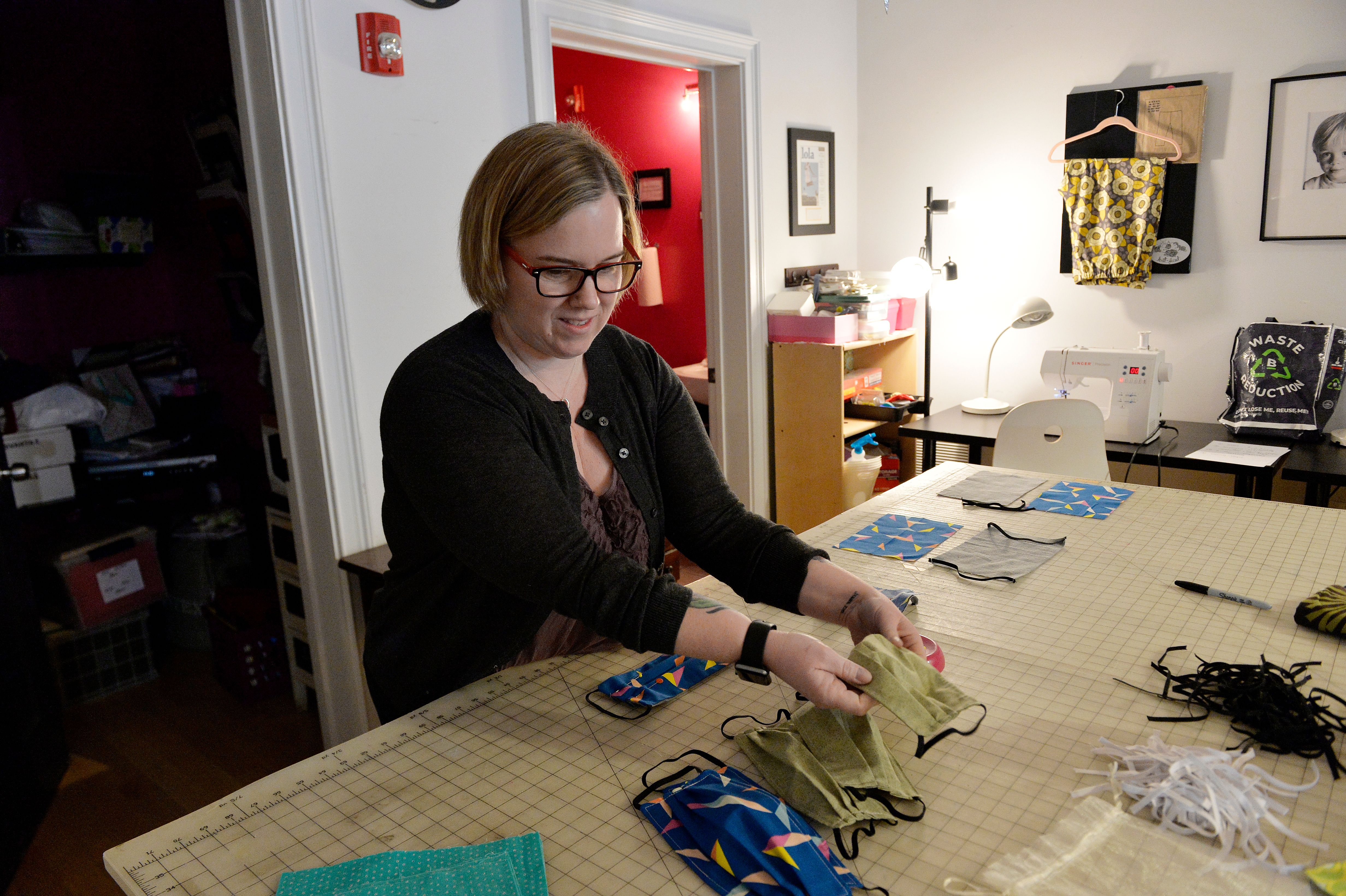Can homemade masks protect you from COVID-19?
Medical masks are still the best option, especially for medical professionals.

Homemade cloth masks aren't ideal, but given the present shortages of medical-grade protective gear in the midst of a pandemic, they may be the best option for some people.
The new coronavirus, named SARS-CoV-2, is a dangerous, airborne illness. It has already spread to 169 countries, including in the United States. Its rapid spread and a lack of preparation by government officials has left doctors, nurses and other frontline workers without access to the protective equipment necessary to defend themselves from the pathogen as they treat patients. It's also left the public without the option of masking up en masse to slow the spread of the disease.
In the past, infectious disease experts questioned the value of homemade cloth masks as a defense against viruses like the flu. But now those same experts are urging medical professionals who only have access to limited protective equipment to use homemade cloth masks if they have absolutely no other option. The Centers for Disease Control and Prevention (CDC) now recommends that health care providers with absolutely no other option use a bandana or scarf when treating patients with COVID-19, the disease caused by the new coronavirus. However,this should ideally be paired with a face shield, and even then, the impact on disease reduction is unknown.
Related: 13 coronavirus myths busted by science
"It is a tragedy that so many countries have not done enough to stop this epidemic, and simultaneously failed to stockpile adequate PPE [personal protective equipment] supplies for health workers," said Raina MacIntyre, head of the Biosecurity Research Program at the University of New South Wales in Australia. "Other than the loss of lives in the community, we are losing doctors and nurses, who are cannon fodder, being forced to treat patients without PPE at all or in inadequate PPE."
MacIntyre led a study in Vietnam, published in the journal BMJ in 2015, which found that for medical professionals treating the flu in Hanoi hospitals, cloth masks appeared to lead to more infections than medical masks. The cloth holds on to moisture, is often reused, and filters poorly compared to medical masks.
Still, MacIntyre told Live Science, if cloth masks are the only option available doctors should use them.
Sign up for the Live Science daily newsletter now
Get the world’s most fascinating discoveries delivered straight to your inbox.
"When doctors are facing not having PPE, I think they should use whatever they can, and if it is homemade, it’s better than nothing," she said. "This is a life or death matter for them, and any barrier protection like a homemade mask will probably help, but, sadly, the outlook looks grim for the U.S. If the epidemic is spiraling out of control, hospital beds full, and health workers sick (and unable to work) or dead, this is a perfect storm. It is devastating."
Another study, published in 2013 in the journal Disaster Medicine and Public Health Preparedness, found that commercial surgical masks were three times as effective as homemade masks at preventing the spread of the flu. (Commercial surgical masks, the looser fitting fabric masks, are not as effective as specialized, tightly fitting N95 respirators at filtering out tiny virus particles, Live Science previously reported.) It concluded that "a homemade mask should only be considered as a last resort to prevent droplet transmission from infected individuals, but it would be better than no protection."
Anna Davies, lead author of that study and a researcher at the University of Cambridge in the United Kingdom, published instructions this March on how to make a homemade cloth mask.
"It is important to stress, however, that the wearing of face masks will only offer limited protection," she wrote, "and should not be considered sufficient protection. Additional preventative measures need to be adopted. These are detailed below:
"1) Avoid close contact with people who appear unwell and who have fever and cough.
"2) Cover your nose and mouth when coughing or sneezing, using a tissue when possible and disposing of it promptly.
"3) It is also important to wash your hands frequently with soap and water to reduce the spread of the virus from your hands to face or to other people and cleaning hard surfaces like door handles frequently using a normal cleaning product.
"4) If caring for someone with a flu-like illness, a mask may be worn to cover the nose and mouth to reduce the risk of transmission. The UK is looking at increasing its stockpile of masks for health care workers for this reason."
The full instructions for making homemade masks are available here, with the template referenced in the instructions available here. Davies stressed the users must read all instructions before beginning.
She concluded, "IMPORTANT: Remember to always wear your face mask in the same orientation, i.e., you should always have the same side facing outward (the contaminated side). Different colors used should help with this. Face masks should be machine-washed frequently to eliminate any residual flu particles, which may be contaminating the outside of the mask. Remove your mask by taking the straps from the back of your head and pull forward — do not touch the material part of the mask. If you do, please remember to wash your hands with soap and water before and after you touch your mask."
For individuals not in the medical field, as Live Science has previously reported, the number-one value of a mask is that it has the potential to help prevent you from spreading the virus to others. It is less likely to keep you safe. The best way to protect yourself, if you have the option, is to stay at home. Nonetheless, if you must go out, if you have access to a cloth mask, it may be worth using, according to the instructions above.
Coronavirus science and news
- Coronavirus in the US: Map & cases
- What are the symptoms?
- How deadly is the new coronavirus?
- How long does virus last on surfaces?
- Is there a cure for COVID-19?
- How does it compare with seasonal flu?
- How does the coronavirus spread?
- Can people spread the coronavirus after they recover?
Originally published on Live Science.
- The 9 Deadliest Viruses on Earth
- 28 Devastating Infectious Diseases
- 20 of the worst epidemics and pandemics in history
The one-month trial gives you access to all of the educational site's 9,000 activities in reading, science, math and art. Keep your child busy and learning while we are all stuck indoors.












